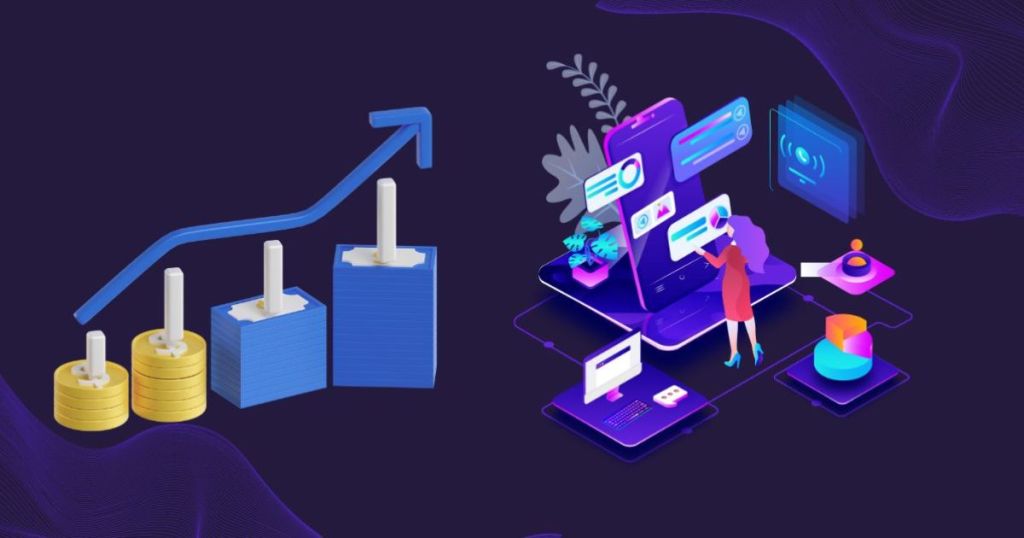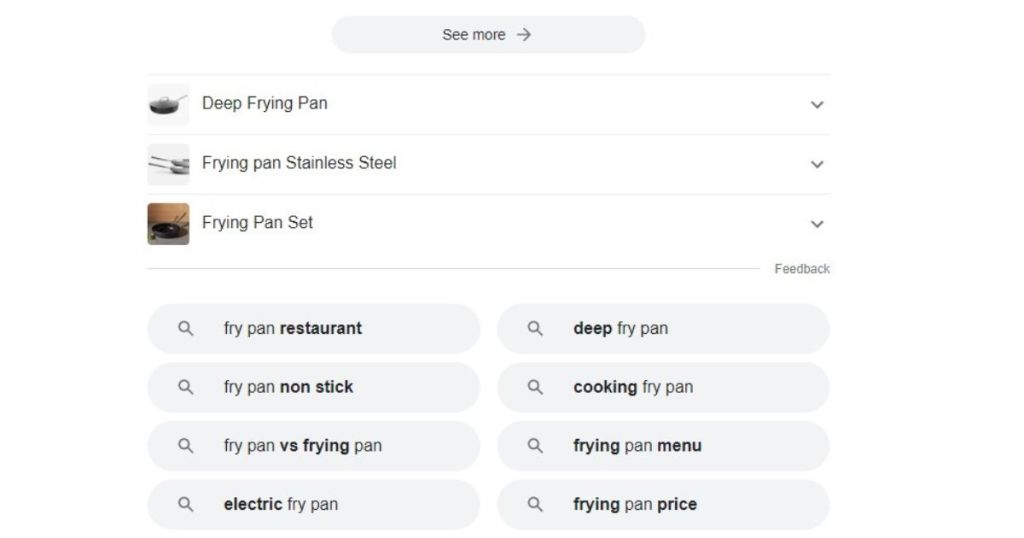LSI (Latent Semantic Indexing) keywords have been the topic of ongoing SEO debates since their first debut. While several experts enjoy using this tactic, some skeptics think LSI keywords are just a buzzword that makes basic keyword research sound more technical. So what exactly are LSI keywords, and do they matter? We’ll demystify the myth in this article.

What are LSI keywords?
Before getting to know how LSI keywords work, let’s first go over the LSI keywords definition. LSI keywords stand for Latent Semantic Indexing keywords or Latent Semantic Analysis keywords. They are words that are semantically related to the main keyword. LSI keywords are not synonyms. They are closely related or related words or phrases.
Let’s say “apple” is the main keyword of your content, and it comes with two meanings – a type of fruit and a tech brand. Google algorithm can understand the context of your content based on the use of LSI keywords.
If your content contains the words such as “iTunes,” “iOS,” or “iPhone,” Google’s search engines will understand it talks about “apple” as a tech brand. On the other hand, if your content has the words like “fruits,” “jam,” “juices,” or “calories,” the algorithm knows it refers to “Apple” as a fruit.
Simply put, the semantically related words strengthen your topic, identify what your content is about, and help Google better understand your content.
One of the mistakes that a copywriter usually makes is to increase the ratio of the main keyword in his copy. SEO LSI tactic will keep keyword density natural and avoid keyword stuffing.
What is Latent Semantic Indexing (LSI)?
Latent Semantic Indexing (LSI) is the ability of search engines to understand the context of content on a website. SEO LSI becomes more important when we put them in the context of anchor text and external links.
For example, if Google sees that a page is about phones and that page links to Samsung, it will imply that there is contextual content linking to another contextual resource. On the other hand, a link to a page about soccer will completely have no relevance.
The lesson here is to avoid tricks like content spinning and focus instead on writing genuine content. Anchor text is important, but the linked page’s content also matters.
How does LSI work?
Latent semantic indexing works by scanning regularity synonyms, or repeated patterns of phrases, removing pronouns, conjunctions, and stop words, and eventually identifying words that emphasize the context of the phrase.
In other words, the LSI Google system will scan your page for closely related terms, helping them understand your content better.

LSI keywords usually display in page titles, headings, tags, meta descriptions, image alt texts, first paragraphs, main content, links, and anchor texts to improve our SEO on-page and organic rankings.
When did LSI keywords become relevant?
The goal of LSI in SEO is to differentiate between good and bad content.
Is it that difficult to differentiate between good and bad content? It is. Indeed, keep in mind that Google or other search engines are machines under training.
If you’re curious about when LSI keywords became relevant, it’s necessary to trace back to the dawn of SEO.
In the early dates, Google relied mostly on keyword density to rank a website on their search engine. With this way of indexing, keyword stuffing and poor-quality writing were rewarded because search engines couldn’t properly comprehend what legitimate writing looks like.
As Googe improved their ability to comprehend content, it became clear that keyword stuffing was a false reflection of content quality. Google has created a more effective way of measuring the relevance of websites to produce more relevant search results. This process began in 2011 with the launch of the Google Panda algorithm.
Google Panda monitors and removes websites with low-quality, duplicate, or suspicious material. Google developed the Hummingbird algorithm in 2013, intending to enhance search relevancy. Hummingbird is aimed to concentrate on word meaning or semantics. Using these two crucial algorithms, Google has restricted displaying low-quality and spam content from showing in search results.
That was when Google implemented latent semantic indexing as a ranking factor.
LSI indexing streamlines how Google determines which site has more quality content among sites following the same niche. For instance, among the websites that sell cars, if your content has a variety of related words such as “price list,” “discount,” “maintenance,” or “Ford,” your content will likely rank higher compared to those repeatedly using the word “car.”
4 Benefits of using LSI keywords
The following benefits are stepping stones to help increase user experience and maximize LSI in SEO.
Improve ranking on search engines
The key mission of search engines is to provide relevant and valuable content to users. SEO LSI keywords make your content more relevant and increasingly valuable for your audience.

Consequently, your website’s rankings will improve, especially when users search for semantically related words to your target keyword. Using LSI to rank high is one of the tactics that SEO specialists use these days.
Enhance content credibility
Instead of using keyword stuffing to force relevance, you can add semantically related keywords to your content. SEO LSI keywords allow you to delve deeper into the topic you’re discussing. This improves the reader’s understanding of what you’re talking about and helps them achieve their search intent.
As a result, you enhance your website’s credibility and stand out from the niche competition.
Improve the time spent on the website
Visitors that find the information valuable will stay on your website longer. They may even explore additional links on your website.
Using LSI keywords will make your SEO on-page voice more natural and appealing. At the same time, it keeps customers on the website for a longer period.
Related post: What is SEO on-page?
Reduce bounce rate
The goal of any website is to drive traffic, not once but constantly. That said, the bounce rate is a sign of false expectations and a content marketer’s worst dream.

Content integrated with SEO LSI keywords is always delivered to the target demographic. Engagement will, therefore, improve, and the bounce rate will lower.
7 Ways To Find Related Words and Phrases
There are numerous methods for exploring and using latent semantic keywords. However, keep in mind that these keywords must be relevant to the content. It’s critical to eliminate keywords that aren’t linked to the topic you’re writing about; otherwise, Google won’t understand your post, and your site’s ranks will suffer.
Google’s Search Engine
When it comes to digital marketing campaigns, the easiest method to look for SEO LSI keywords is to find them where they work – Google. This way, you will know precisely how Google-indexed LSI keywords correspond to your main keyword. You can easily discover LSI keywords by entering your main keyword in the Google search box and finding related LSI words and search terms in the featured snippet section of the SERPs page.
Google Auto Suggest
You can easily find SEO LSI keywords by using the auto-suggest function of Google Search (Google Auto Suggest). When you enter a search on Google, this function pops up right away with numerous search choices for the main keyword.
For example, when entering the search term “fry pan”, you will see the following LSI keyword suggestions: “fry pan size guide,” “fry pan set,” and “fry pan on sale.”

Google’s Search Related To
In addition, the relevant search suggestions section that frequently displays at the bottom of SERPs is an excellent source of LSI keyword ideas.
Like the above example of “fry pan”. If you scroll down to the bottom of the Google search results page, you’ll see the following:

You can refer to these keyword phrases and maybe generate some ideas to find LSI keywords for your article.
Google Image Tag
When you type in the search “fry pan nonstick” and choose to view Images, Google will display the following results. From this point, you’ll get more insights into the LSI keywords such as “stainless steel,” “marble,” and “cookware,” among others.

Google Keyword Planner
Google Keyword Planner is a popular tool for SEO LSI keyword research.
To get started, connect to your Google AdWords account and access Keyword Planner. After logging in, choose “Find Keywords” from the drop-down menu in Google AdWords. Choose your option by clicking “Search for new Keywords” and entering a phrase, website, or category.
LSI Tool
As LSI keywords have proven their vital role in SEO, a huge number of LSI tools have come onto the scene to help digital marketers achieve their goals.
LSIGraph and LSIKeywords.com are two common tools experts use to approach LSI keyword research. Both of these tools work the same way. All you have to do is type in the keyword you want to research, and you’ll get suggestions immediately.
However, you should pay attention while using those tools to select semantically related keywords to optimize planning and contribute to content quality.
SEO Tool
LSI keyword research through keyword research tools helps you to expand your keywords effectively and reasonably.
SEO tools such as Ahrefs or Semrush can also help you explore more LSI keyword ideas. Ahrefs’ Keywords Explorer will help you find keyword ideas with related words and phrases. Semrush will let you explore more keyword ideas with suggested variations, questions, and related words.
Let’s look at how Semrush suggests some SEO LSI ideas in terms of “car”:

Apart from those above tips and tools, you can also look for support from professional on-page SEO services. They often come up with quick turnaround solutions to help you achieve the most satisfactory results.
Frequently Asked Questions
Does Google Use LSI in Their Algorithm?
The use of LSI in Google’s algorithm is still being discussed. Several analysts claim Google uses LSI, while others disagree.
Leaving aside the controversy, SEO LSI keywords effectively enhance content relevancy. Adding related words also helps to avoid keyword overload, aka keyword stuffing.
Does YouTube use LSI keywords?
Like Google, the use of LSI in Google’s algorithm remains an open question. However, using LSI keywords is also a good practice to make your content more relevant.
At the end of the day, the content and quality of the channel’s videos are critical attributes that directly impact YouTube SEO. YouTube will reward you for the relevance and quality of your videos if you provide quality videos and content that meets the needs of your viewers.
Can related words boost rankings?
Related words can help your website rank higher in search engines. Adding SEO LSI keywords to your article content can help search engines understand your page and will boost its ranking power.
Related words increase the number of people finding your content. The tactic also helps you provide a better search experience for users, which improves various ranking factors, such as on-page time, bounce rate, and many more.
Conclusion
Using SEO LSI keywords in your article can provide you with numerous benefits. The key is to prioritize user experience over ranking high. Provide just enough important words to clarify the page context to Google, yet not too much to ruin the reader’s experience.
Co-Founder & General Manager @ ROI Digitally






